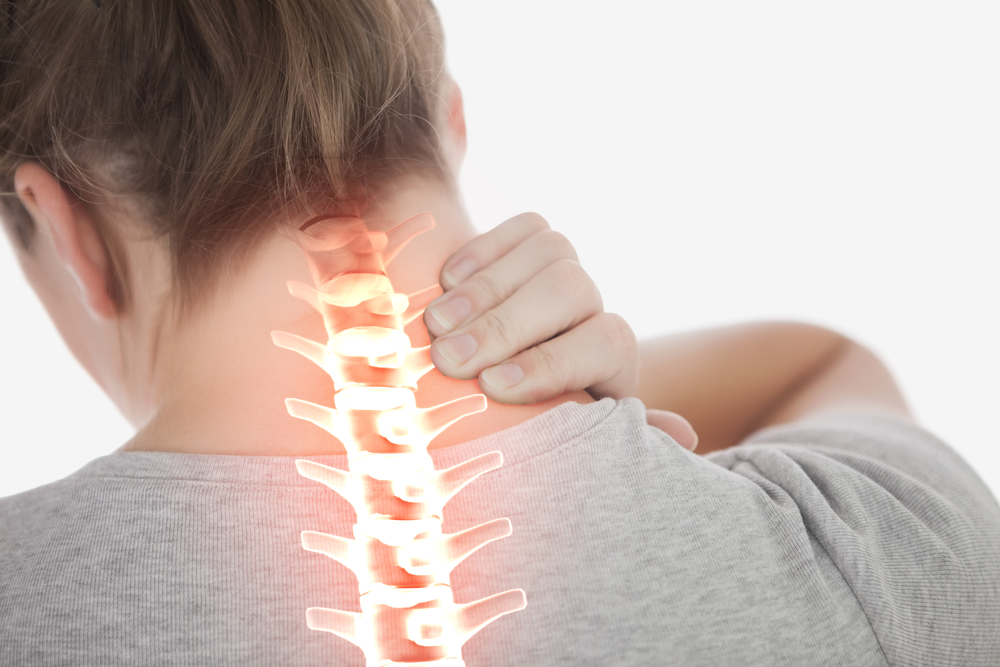Nerve impingement occurring in cervical area or the neck is known as cervical radiculopathy. Bone spurs, disc herniation, injury and disk degeneration are some of the probable causes of such impingement. Treatment for this condition is usually conservative.
Techniques like physical therapy, immobilization and medicine are used to bring down the pain. For severe conditions, surgery might be suggested to free impinged nerves or to remove bony growth formed on normal bone, broken portions of the disk. Another option is to go for spinal fusion, but that’s less desirable due to immobility in the cervical area.
Cervical radiculopathy is the underlying cause in most of the cases of neck pain that we treat at Sports and Spine Orthopaedics . We have a good team of professionals to provide the treatment of this illness through physical therapy and pain medication as well as expert spinal surgeons capable of performing surgeries if and when needed.
Causes
Anything that puts pressure on the nerves in the neck or spinal cord area can cause cervical radiculopathy. Disk protrusion and resultant pressure on the nerves also known as disc herniation is the most common cause of radiculopathy.
Spinal stenosis resulting from the narrowing of the spinal canal and pressure on the spinal cord is also one of the common causes. Trauma, lacerated nerves or a broken vertebra can also lead to radiculopathy.
Aging is also a very common cause of radiculopathy. With age, the disks lose water and height which in turn leads to nerve compression in the spinal cord area. Moreover, the gradual wear and tear on the joints leads the body to mark the area as weak and form bone tissue along the sides of the vertebra to give added support and support. But on the flip side, the bone spurs impinge on nerves.
Indicators / Symptoms
A sharp pain in the arm on the side that is affected is the most common symptom in this illness. The truth is, you may have neck besides pain and other senses in your arms. Depending on the severity of radiculopathy you may sense pins and needles, tingling, or numbness.
Normal movement of the hands and arm can be affected and you might experience a feeling of weakness in the hand and problems in stretching your arm if one of the motor nerves is impinged. Some people also complain of pain only for specific motions. This generally results from partial impingement of the nerve.
Treatment and Cure
Physical therapy plays a significant role in treating this illness because it helps in making the neck muscles capable of supporting the degenerated discs. Soft immobilization collars can additionally provide rest to the muscles and ligaments of the neck. Medications and injections are also effective and used to reduce the pain.
Anterior cervical discectomy and fusion removes the diseased disk and grafts a bone on the two adjacent vertebrae to bring down pain and movement. The graft is generally chosen from the top of the pelvis, and occasionally pins and screws are used along the anterior part of the cervical spinal column to supply firmness.
The spine is approached from the back and only some parts of the affected disk is removed in posterior cervical laminoforaminotomy. A more modern method is the artificial disc replacement but it would take some time and research to make it more successful and affordable.
Sports and Spine Orthopaedics provides holistic health and well being solutions. We’ve got the specialists to properly identify your condition and recommend the most effective treatments.
Our goal is to use the least invasive procedures first and our team of medical professionals can guide you in choosing the right medications and physical therapy. Get in touch with us today for a consultation.


I read a lot of interesting posts about cervical radiculopathy and ned to have this procedure done.
Gabriella, Artificial disk replacement (disk arthroplasty) is now decades old in Europe. The European equivalent to the FDA has approved the devices ( for example the M6 cervical disk made by Spinal Kinetics, Sunnyvale, CA) and the surgical procedure over a decade ago. 6 As a matter of fact in the case of the M6 Artificial Disk has been implanted over 10,000 times outside of the USA.
What has been done in Europe now, with artificial disks made in the USA, is just now beginning to show up in clinical trials in the USA. Depending on AMA and FDA politics some of these newer generational devices may be available for single level disk replacement in the next 3 to 5 years.
Keep in mind, even though a procedure or device becomes FDA approved, your for profit insurance company will keep it on the experimental exemption list for years to come, I.e. they won’t pay for any of the operation.
If you can’t wait you may need to travel to a clinic in Spain, Germany, France for example or elsewhere in the world for the very best treatment mankind has to offer. I’d say consult your physician before doing this but they have a vested interest for you to remain in the American Medical Association (AMA) system consuming drugs and having an older, yet tried and true, method for treating your spine, and at nearly double the cost I might add.
Like most everything, a healthy spine is so important to your health, and the more knowledge you possess the better decision you can make.
Check out some online blogs of those that went to Europe and had their procedure done there. You may even e-mail some of the doctors and you’ll be surprised when they reply. The surprise to me was that most US doctors feel they are far to important to be bothered with an e-mail from a perspective paying customer, insured or not. Doctors in Europe normally do not behave this way generally toward any fellow human beings in general. I hope this helps.